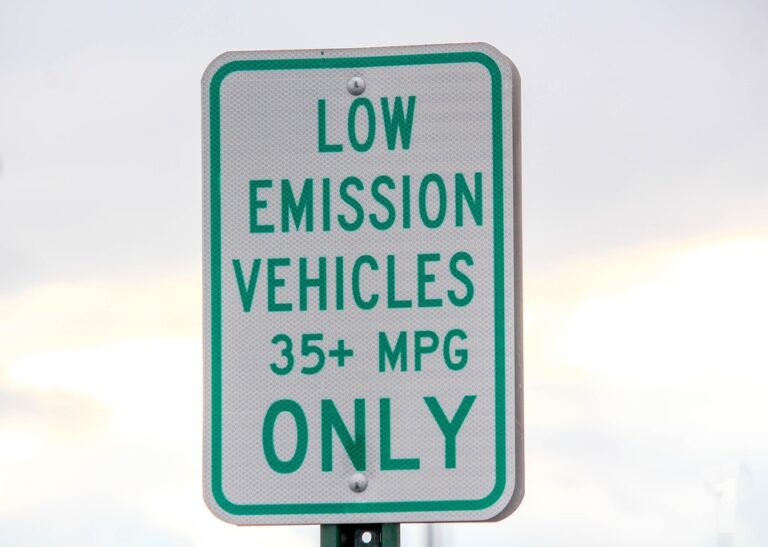Breaking Down the Numbers: How Vehicle Emissions Affect Air Quality
Meta Description: Discover how vehicle emissions impact air quality, and learn about the numbers that matter for a cleaner environment.
Introduction
In an age where environmental awareness is paramount, understanding how vehicle emissions affect air quality has become increasingly vital. With millions of cars on the road, the numbers behind vehicle emissions provide critical insights into our collective environmental impact. This article will break down the statistics surrounding vehicle emissions, their effects on air quality, and what steps can be taken to mitigate these issues.
The Impact of Vehicle Emissions on Air Quality
Vehicle emissions refer to the pollutants released into the atmosphere as a byproduct of fuel combustion. These emissions can contain various harmful substances, including carbon monoxide (CO), nitrogen oxides (NOx), hydrocarbons (HC), and particulate matter (PM). It’s essential to quantify these emissions to grasp their impact on air quality.
Key Statistics on Vehicle Emissions
- Global CO2 Emissions: Road transport accounts for approximately 15% of global CO2 emissions, a significant driver of climate change.
- Health Impact Estimates: The World Health Organization (WHO) estimates that air pollution from vehicle emissions contributes to about 4.2 million premature deaths each year.
- Urban Areas: In urban areas, about 60% of nitrogen oxide emissions come from vehicles. These gases are known to contribute to respiratory problems and other health issues.
How Vehicle Emissions Degrade Air Quality
The pollutants emitted by vehicles lead to air quality degradation through several mechanisms:
- Smog Formation: Nitrogen oxides and volatile organic compounds (VOCs) can react under sunlight to form ground-level ozone, a primary component of smog.
- Respiratory Issues: Fine particulate matter can penetrate deep into the lungs, causing chronic diseases like asthma, bronchitis, and heart disease.
- Environmental Impact: Pollutants can have repercussions beyond human health; they may adversely affect wildlife and vegetation.
Factors Influencing Vehicle Emissions
Several variables contribute to the emission levels from vehicles, including vehicle type, fuel quality, and driving habits.
Types of Vehicles and Their Emissions
Different types of vehicles produce varying amounts of emissions. According to the Environmental Protection Agency (EPA):
- Gasoline-Powered Vehicles: Emit significant amounts of CO2 and hydrocarbons, particularly older models lacking modern emission controls.
- Diesel Vehicles: Tend to produce more NOx and particulate matter, making them sharply detrimental to air quality, especially in urban environments.
- Electric Vehicles (EVs): Essentially produce no tailpipe emissions, making them a cleaner alternative, although their environmental impact depends on the source of electricity used for charging.
Driving Habits and Emissions
Driving conditions and habits also play a crucial role. Frequent idling, aggressive driving, and stop-and-go traffic can heighten emissions, as engines work less efficiently in these scenarios.
Government Policies and Vehicle Emissions
Governments worldwide have begun implementing regulations aimed at reducing vehicle emissions and improving air quality.
Notable Initiatives
- Emission Standards: Stricter emission standards for new vehicles, such as the Euro 6 standards in Europe, aim to limit harmful emissions from both gasoline and diesel vehicles.
- Incentives for EVs: Many countries offer tax incentives for purchasing electric vehicles, encouraging a shift towards cleaner transportation options.
- Public Transport Improvements: Investing in public transportation systems can significantly reduce the number of vehicles on the road, thus improving air quality.
What Can You Do to Help?
Individuals can contribute to improved air quality by adopting eco-friendlier practices. Here are some actionable steps:
- Use Public Transport: Whenever possible, utilize public transportation to reduce your personal vehicle’s emissions.
- Consider an EV: If feasible, switching to an electric vehicle can drastically reduce your carbon footprint.
- Drive Efficiently: Maintain a consistent speed, avoid unnecessary idling, and ensure your vehicle is regularly serviced for optimal performance.
Conclusion
Understanding the statistics behind vehicle emissions is crucial for recognizing their profound impact on air quality. With various pollutants affecting both the environment and public health, taking action to reduce these emissions is not just a governmental responsibility but also an individual obligation. By being informed about our choices and advocating for cleaner air, we can all contribute to a healthier planet.
Call to Action: To stay updated on the latest automotive and environmental news, subscribe to our newsletter and be part of the conversation for a cleaner and greener future!


